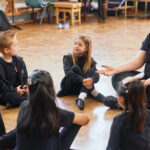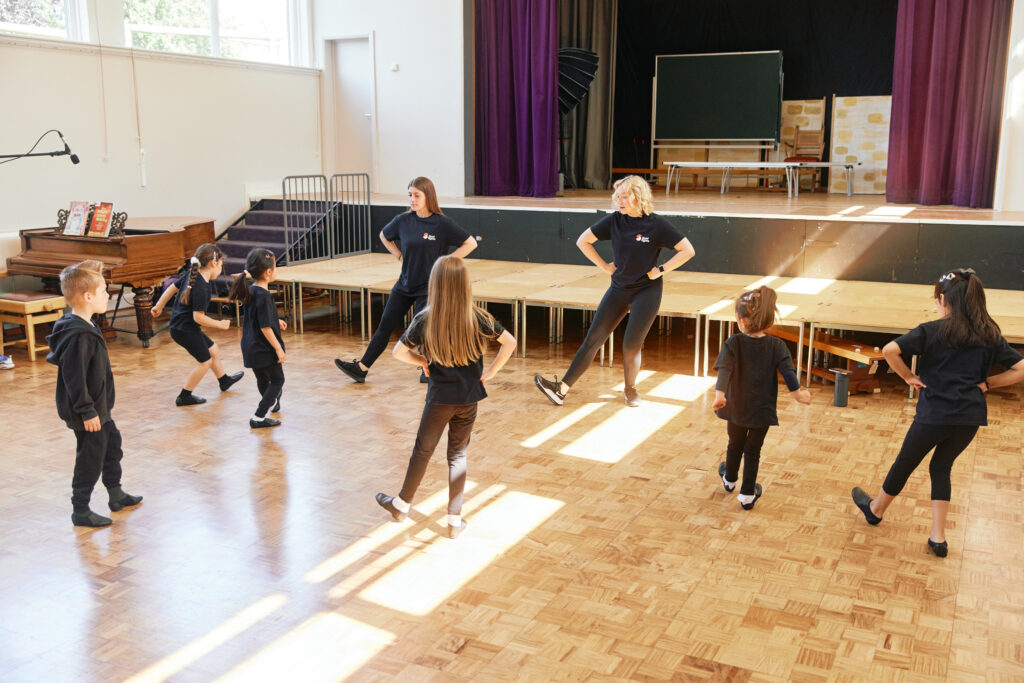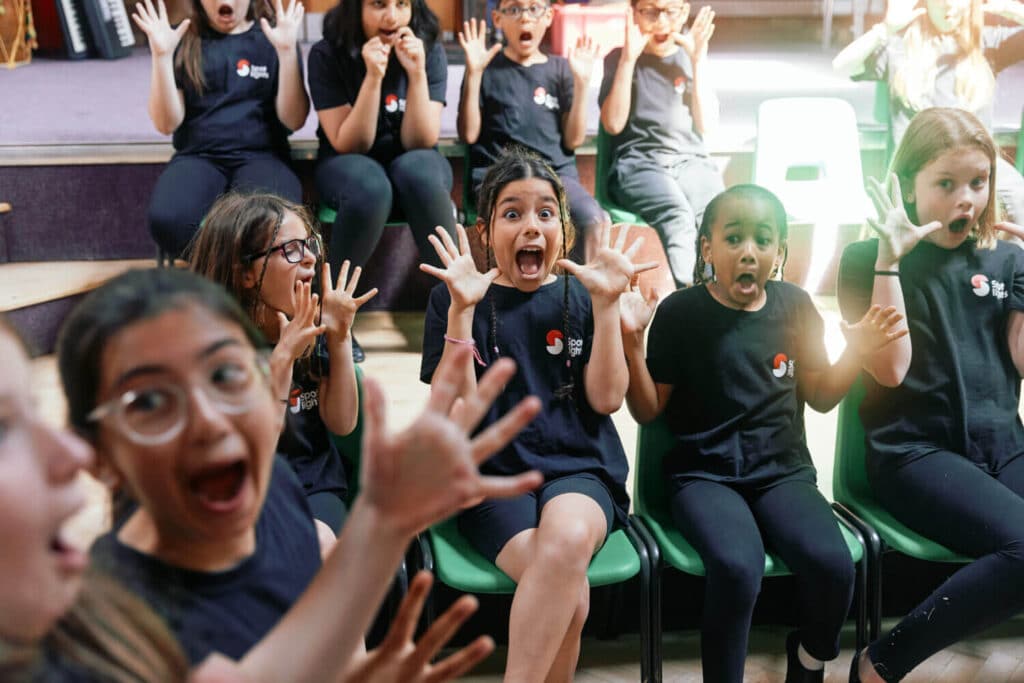
10 Ways To Support Children’s Musical Development
Children’s musical development is a gift that keeps giving, bringing joy, confidence and lifelong skills. From first claps to belting out a favourite tune in the kitchen, music helps shape young minds, encourages creativity and builds connection with others.
You don’t need to be a professional musician to support your child’s musical journey. What you need is a playful mindset, a willingness to join in, and a few ideas to turn everyday moments into powerful opportunities for children’s creative music making.
Here are 10 practical, engaging ways parents can support children’s musical development, with insights drawn from early childhood music research, musical theatre training principles, and the joy of shared learning.
10 Ways To Support Your Child’s Musical Development
Helping your child’s musical development doesn’t need to feel overwhelming or technical. From kids’ musical theatre classes that build confidence to easy musical play ideas at home, there are plenty of joyful ways to support your child’s creativity and skills as they grow.
1. Create a Musical Environment at Home
Children learn music best when it’s part of daily life. Simple actions like playing a range of recorded music, exploring musical play with wooden instruments, or adding music to tidy-up time can nurture their creativity.
Research suggests that environments rich in sounds, rhythms and opportunities to explore music help shape children’s hearing, listening and vocalising skills. Children benefit from hearing a wide range of musical forms and musical terms in context, whether you’re listening to a soundtrack or humming along while preparing dinner.
Practical idea: Create a ‘morning tune’ playlist for getting ready, a ‘movement’ playlist for energetic play and a ‘calm’ playlist for bedtime. Let your child pick a theme and add songs to keep them engaged.
2. Encourage Singing Every Day
Singing is one of the most powerful ways to develop children’s musical skills, memory and language. Whether it’s nursery rhymes, show tunes, or silly made-up songs about brushing teeth, singing helps children learn pitch, rhythm and phrasing while building confidence.
Spotlights’ teachers see first-hand how singing classes for kids help children develop stage presence, confidence and teamwork.
Parents can support singing by joining in, modelling enthusiasm rather than perfection. Children don’t need polished vocals; they need to feel free to explore their voices without judgement.
Practical idea: Have a ‘song of the week’ to learn together, adding actions or simple instruments like shakers to support rhythm.
See Also: The Best Age To Start Musical Theatre Training
3. Play Rhythmic Games
Rhythm is the heartbeat of music. Developing a child’s sense of rhythm supports coordination, timing and movement skills, which are essential in dance and musical theatre.
Games like clapping patterns, tapping rhythms on pots, or using body percussion help children listen, copy and create their own rhythmic phrases. Research highlights that rhythmic play develops listening and playing skills in an enjoyable way.
Practical idea: Create a ‘rhythm detective’ game where you tap out a rhythm, and your child tries to copy it. Swap roles to let them lead.

4. Introduce Musical Play with Instruments
Musical play with simple instruments like drums, bells or keyboards encourages children’s creativity and fine motor skills. It also gives them a sense of control over sounds and dynamics, teaching them how to play softly, loudly, slowly or quickly.
Children’s creative music making with instruments can start as early as toddlerhood and adapt as they grow. Learning to play even simple melodies helps develop hand-eye coordination, listening skills and an understanding of musical structure.
Practical idea: Let your child explore sounds on instruments without instruction. Ask them to create a short ‘tune’ that matches a feeling or a story, connecting music to emotions and ideas.
5. Explore Music Through Movement
Movement is a key aspect of musical development. Dancing, swaying or acting out stories to music connects children’s bodies to rhythm and phrasing. There are many benefits of dance for young children including learning to express stories and emotions through movement alongside singing.
Practical idea: Play a piece of music and encourage your child to move like different animals or characters, drawing connections between sounds and movements.
6. Use Musical Terms in Everyday Language
Introducing simple musical terms like ‘loud’, ‘soft’, ‘fast’, ‘slow’, ‘high’, ‘low’ and ‘rhythm’ in everyday conversations helps children develop musical vocabulary naturally. For example, when listening to music together, you could say, “Can you hear how the music gets louder here?” or “This part sounds very fast, doesn’t it?”
Using musical terms while playing, listening or singing helps build children’s confidence in talking about music, which supports learning in music classes and builds connections between home and structured environments like musical theatre classes.
7. Listen Actively Together
Listening is a crucial skill for children’s musical development. Active listening means focusing on the music, discussing what you hear and exploring different aspects such as instruments, dynamics or emotions in the piece.
Parents can support children by asking open questions like:
- “What instruments can you hear?”
- “How does this music make you feel?”
- “Can you hear the beat?”
Practical idea: Pick a ‘listening theme’ for the week, such as ‘music with strong rhythms’ or ‘songs with animals in the lyrics’. This keeps listening activities engaging while helping your child notice different musical features.
8. Attend Live Performances
Taking children to see live performances, whether a local musical theatre show, a school concert or an outdoor music event, helps develop their musical ear and exposes them to the excitement of live music.
Watching musicians perform helps children see how music is created in real time, how performers interact with an audience and how different musical forms come alive on stage. If your child attends Spotlights, seeing live theatre, especially performances which include child roles, can enhance their connection to what they learn in class.
Practical idea: After a performance, chat with your child about what they enjoyed, which parts they found exciting, and what they would like to try themselves.
9. Make Space for Creativity
Children need time and space to experiment with music freely, whether through singing, dancing, creating their own songs or exploring instruments. Letting them take the lead in musical play develops their creativity, confidence and willingness to try new ideas.
Creating a ‘music box’ with scarves, shakers, bells and other props can encourage independent exploration. Allow your child to put on a mini performance for the family, choosing their theme, songs and movement.
10. Connect Music to Emotions and Stories
Music is a powerful way to help children understand and express emotions. Singing songs about feelings or creating soundtracks for stories encourages children to connect music to their inner world, developing emotional awareness and empathy.
Practical idea: Read a story and ask your child what kind of music would fit different parts of the story. Would the character’s happy moment need a fast, lively tune? Would a sad part need slow, soft music? This helps children understand how music shapes stories, just like in musical theatre.

Interested in Nurturing Your Child’s Musical Development?
Spotlights offers musical theatre classes in London for children of all ages, helping them develop singing, dancing, acting and confidence in a supportive environment. Our classes are designed to build children’s skills while keeping the joy of music and creativity at the heart of learning.
Book your free trial or get in touch for more information!
FAQs
How much practice should my child do to support their musical development?
A little daily practice goes a long way. Short, playful bursts of 10 to 15 minutes can be more effective than long, pressured sessions. Encourage your child to sing, move, and play their instrument with curiosity rather than focusing on perfection. This helps them build skills and confidence without losing the joy in their music.
What is ‘listening vocalising’ and how can it help my child?
Listening vocalising is when children hear sounds or music and respond by making their own vocal sounds back. It could be as simple as copying a note or making up a phrase during a song. This helps develop pitch awareness, memory, and creativity while strengthening the connection between hearing and producing music. It’s a fun part of musical play that parents can encourage during everyday routines.
What resources can help me support my child’s musical learning at home?
You don’t need fancy equipment to make an impact. Recorded music, simple rhythm games, and everyday items (like wooden spoons for drumming) are powerful resources to shape your child’s musical world. You could also look for local kids’ musical theatre classes to give them a supportive environment to explore and perform. All these experiences work together to nurture your child’s love of music.
Which Class Is Best For My Child?
We have a range of classes available for children ages 4-18 years. Find out more about each of our groups to see which classes are best for your child.
Little Stars Performing Arts Class – These weekly classes are for children aged 4-7. They include acting, singing and dancing classes to introduce children to the fun of performing arts.
Stars 1, 2 & 3 Classes – These are our weekly acting, singing and dancing classes. Stars groups are for children aged 7-18. Children are split into school years so your children learn with similar aged children.
Lamda Classes – Our LAMDA classes are weekly classes offered to existing Spotlights children aged 7+. These are additional group drama examinations.
Weekend Drama Classes – Our weekend performing arts classes for children are a blend of fun, creativity, and skill-building, designed for children aged 4-18.
Holiday Camp Drama Classes – Our holiday classes are week long courses with a mix of acting, singing and dancing. They are for all ages and are based around a theme such as Disney, Greatest Showman and more. At the end of the course we put on a costumed performance to the children’s family and friends.




